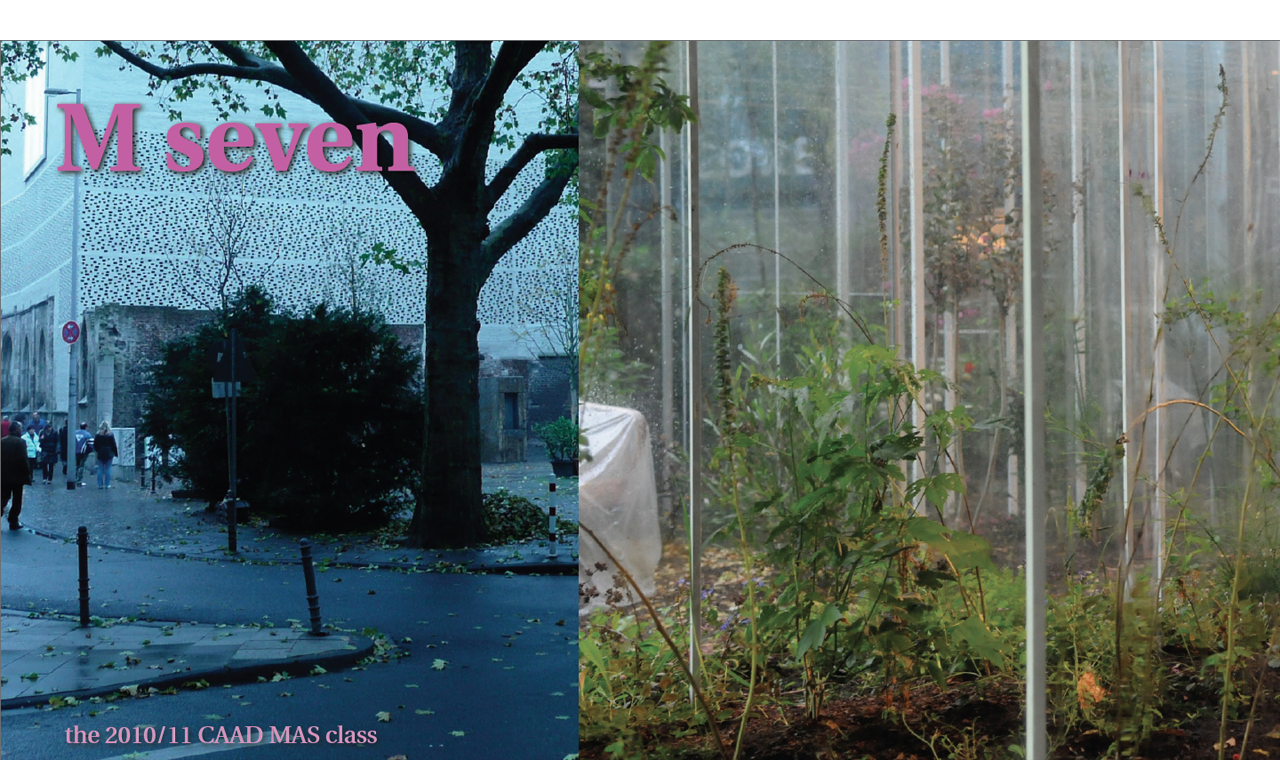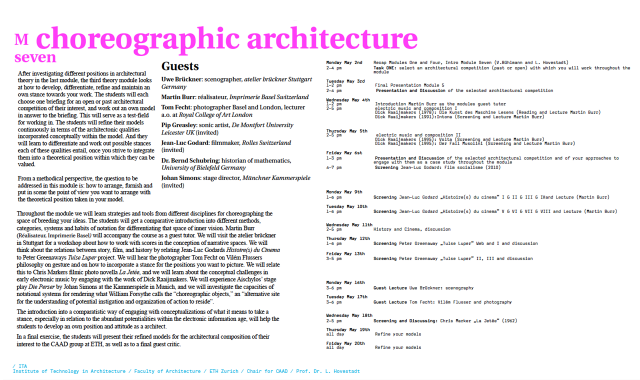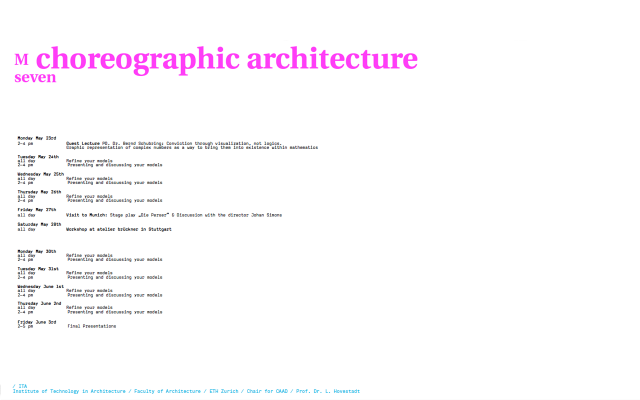M SEVEN: CHOREOGRAPHIC ARCHITECTURE
After investigating different positions in architectural theory in the last module, the third theory module looks at how to develop, differentiate, refine and maintain anown stance towards your work. The students will each choose one briefing for an open or past architectural competition of their interest, and work out an own model in answer to the briefing. This will serve as a test-field for working in. The students will refine their models continuously in terms of the architectonic qualities incorporated conceptually within the model. And they will learn to differentiate and work out possible stances each of these qualities entail, once you strive to integrate them into a theoretical position within which they can be valued.
From a methodical perspective, the question to be addressed in this module is: how to arrange, furnish and put in scene the point of view you want to arrange with the theoretical position taken in your model.
Throughout the module we will learn strategies and tools from different disciplines for choreographing the space of breeding your ideas. The students will get a comparative introduction into different methods, categories, systems and habits of notation for differentiating that space of inner vision. Martin Burr (Réalisateur, Imprimerie Basel) will accompany the course as a guest tutor. We will visit the atelier brücknerin Stuttgart for a workshop about how to work with scores in the conception of narrative spaces. We will think about the relations between story, film, and history by relating Jean-Luc Godards Histoire(s) du Cinema to Peter Greenaways Tulse Luper project. We will hear the photographer Tom Fecht on Vilém Flussersphilosophy on gesture and on how to incorporate a stance for the positions you want to picture. We will relate this to Chris Markers filmic photo novella La Jetée, and we will learn about the conceptual challenges inearly electronic music by engaging with the work of Dick Raaijmakers. We will experience Aischylosâ stage play Die Perser by Johan Simons at the Kammerspiele in Munich, and we will investigate the capacities of notational systems for rendering what William Forsythe calls the âchoreographic objects,â an âalternative site for the understanding of potential instigation and organization of action to resideâ.
The introduction into a comparatistic way of engaging with conceptualizations of what it means to take astance, especially in relation to the abundant potentialities within the electronic information age, will help the students to develop an own position and attitude as a architect.
In a final exercise, the students will present their refined models for the architectural composition of their interest to the CAAD group at ETH, as well as to a final guest critic.
Guest
Uwe Brückner: scenographer, atelier brückner Stuttgart Germany.
Martin Burr: réalisateur, Imprimerie Basel Switzerland.
Tom Fecht: photographer Basel and London, lecturer a.o. at Royal College of Art London.
Pip Greasley: sonic artist, De Montfort University Leicester UK (invited).
Jean-Luc Godard: filmmaker, Rolles Switzerland (invited).
Dr. Bernd Schubring: historian of mathematics, University of Bielefeld Germany.
Johan Simons: stage director, Münchner Kammerspiele (invited).


